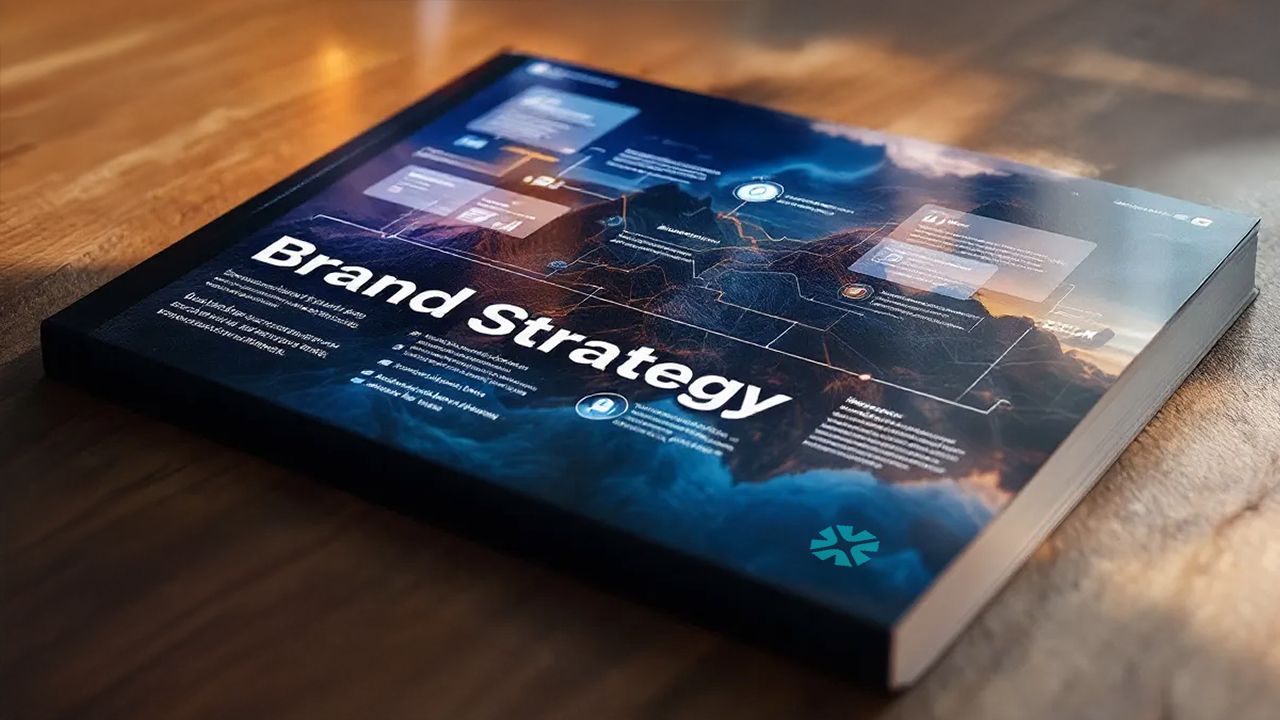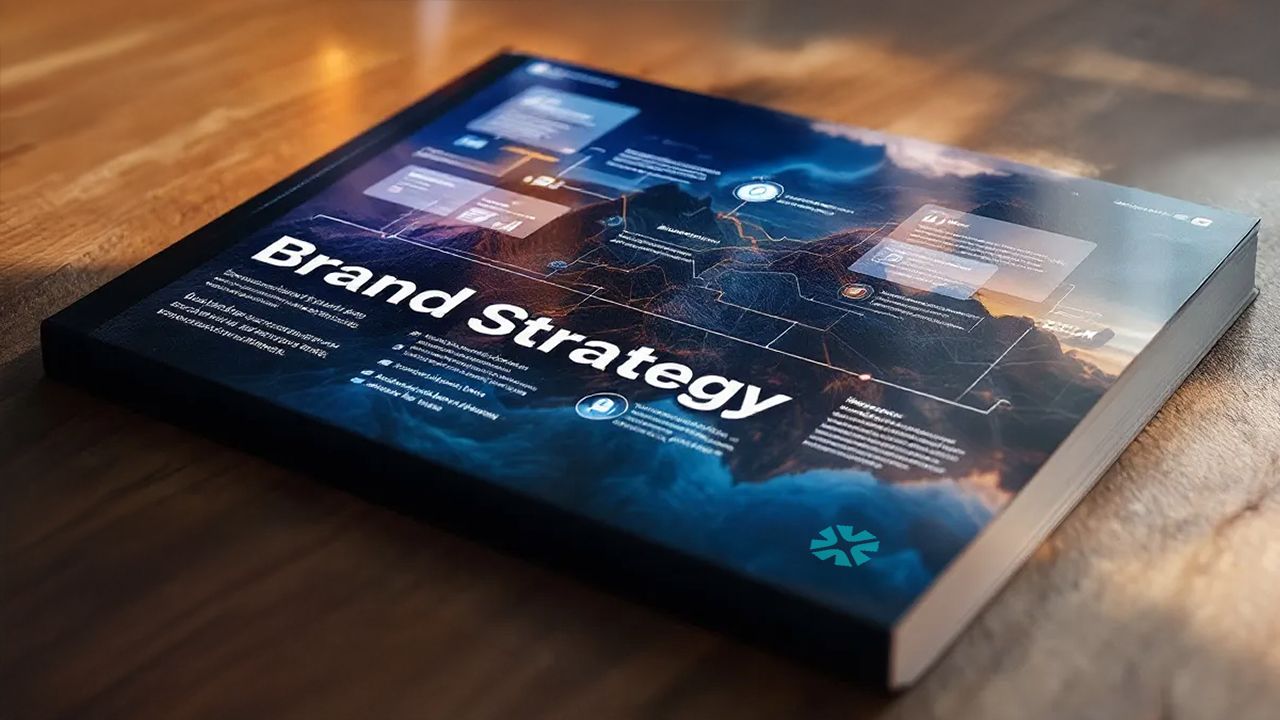Picture this: It’s 10pm, you’ve just finished reworking your logo (again), and you’re asking yourself, is any of this really moving the needle for my business? Years ago, that was me—obsessing over pixel-perfect details while stressing about cash flow. Turns out, there’s a science (and some wild numbers) behind the business value of design, and it’s more practical—and profitable—than you’d think. Let’s tear down some myths and get into the real story: how design pays for itself, sometimes several times over—even if you’re not Google or Apple.
Why Big-Company Design Advice Doesn’t Work for the Rest of Us
If you’ve ever read a design report from McKinsey or Forrester, you’ll notice something right away: their advice is built for Fortune 500 giants. They talk about embedding design in the C-suite, launching company-wide initiatives, and breaking down internal silos. All of this sounds impressive—until you try to apply it to your own small business or startup. Suddenly, the “business value of design” feels distant, even irrelevant. You’re not looking to shift company culture or convene cross-functional teams. You want to know how a specific design investment—like a website refresh or a packaging revamp—can help your bottom line, fast.
Research shows that design-driven companies outperform the market by two to one (McKinsey, 2018). But here’s the catch: those studies focus on large enterprises. The recommendations rarely translate to the realities of a two-person team, a solopreneur, or a creator with a modest budget. As one founder put it after slogging through a thick corporate design report, “None of this fits my business—what if there’s a better way?”
That’s where the idea of design as discrete activities comes in. Instead of treating design as an abstract, organization-wide process, you focus on tangible projects: rebranding, user experience design, packaging updates, or a new product launch. This “design-as-activity” approach is actionable. It’s about measuring design impact through clear, practical outcomes—more leads, higher conversions, less hassle—not just lofty strategy.
For small businesses, the business value of design is tied directly to results. A well-executed rebrand or website overhaul can deliver a measurable lift in sales or customer engagement, even on a tight budget. The goal is design-driven profitability, not just aesthetics. As Brian Beaver, VP of Design at Eventbrite, puts it:
‘Great design isn’t just for giants—it’s a secret weapon for nimble startups.’
Take it from experience: I once spent a weekend wrestling with packaging updates, only to watch a designer’s streamlined approach double our product line sales. That’s the kind of immediate impact you’re after. Good design should save you time, reduce friction, and boost your business in ways you can actually measure.
In short, while big-company advice highlights the importance of design, it often misses the mark for small businesses. You need practical, bang-for-buck design moves—activities you can implement, measure, and refine. That’s how you turn creative investments into real, lasting profits.
Design’s Double Punch: Grow Revenue, Slash Costs
When you think about design, it’s easy to picture logos, colors, and layouts. But for small businesses, design is much more than making things look good—it’s a powerful lever for both growing your revenue and cutting your costs. Think of design as both rocket fuel for your sales and a machete for slashing unnecessary expenses. The design impact on revenue is real, and so is the cost reduction through design when you approach it strategically.
Let’s start with the numbers. One of Jon Persson’s clients saw a 77% increase in revenue after investing $17,000 in a brand identity overhaul. That’s not just a theoretical return on investment; it’s a concrete example of how smart design decisions pay off. What’s driving this? The halo effect in branding. When your visual identity is sharp and professional, customers instantly perceive your business as more trustworthy and valuable—sometimes on par with much larger competitors. Research shows that first impressions and brand appearance can directly influence what customers are willing to pay and how likely they are to choose your business over others.
But design’s double punch doesn’t stop at sales. Smart design also streamlines your operations, ending the endless tweaks and indecision that drain both time and money. Take user experience (UX) design, for example. It’s not just window dressing. Persson highlights the case of Spruce, a CBD oils e-commerce brand, which achieved record conversion rates after a homepage redesign. This is a clear example of user experience design benefits—where refining the customer journey translates directly to more sales and higher customer satisfaction.
If you’re skeptical about design as a cost-cutter, consider the impact of design systems. These are living rule books for your brand, ensuring consistency and reducing the need for repetitive, ad-hoc decisions. Without a design system, you rack up “design debt”—the hidden cost of making the same small design choices over and over. Over time, this adds up to wasted hours and wages. By implementing a design system, you standardize workflows and cut both fixed and variable costs.
Productized services offer another path to savings. Persson’s Launch Pad service, for instance, reduced brand project costs from $20,000+ to $8,000, automated 90% of onboarding (saving $1,000 per project), and eliminated $2,500 in project management costs. These efficiencies mean you get high-quality design faster and for less money.
‘Never underestimate the revenue power of a good logo and a better user journey.’ – Jon Persson
Your Brand Isn’t (Just) a Logo: Identity and Trust in a Digital World
When it comes to the brand identity design importance, it’s easy to think of your logo as the main event. But in reality, your visual identity is a shortcut for trust—most people judge your entire business faster than you can type “portfolio.” As Paul Batterham puts it,
“People decide within seconds if your business is credible, often before they even read your offer.”
This snap judgment is no accident. Research consistently shows that well-crafted branding leads to higher perceived quality and increased customer loyalty. Studies by ChangHyun Jin et al. (2019), Shahrokh et al. (2012), and Edward Wang (2013) all confirm that strong visual branding boosts perceived value and trust. This is the halo effect in branding—where a polished, consistent look makes customers assume your products or services are equally high quality.
Think about it: would you pay $1,000 for an iPhone if Apple’s branding used Comic Sans and clashing colors? Probably not. The business value of design is real and measurable. In fact, a simple homepage brand refresh once tripled my newsletter signups overnight. That’s not just a fluke. It’s a direct result of aligning your visual identity with the expectations and trust signals your audience is looking for.
For startups and small businesses, this is a huge opportunity. In many industries, especially those where competitors neglect design, nailing your brand identity early lets you punch above your weight. You don’t need a massive budget to stand out—just a thoughtful, consistent approach. Research shows that even a minor investment in brand refresh can yield outsized business results, especially for small businesses trying to carve out a niche.
It’s not just about your website or logo, either. Design impacts every customer touchpoint, from your Instagram posts to your invoices. Consistent identity multiplies marketing effectiveness, making every interaction feel intentional and professional. This consistency is especially vital online, where first impressions stick and customers rarely give second chances.
Studies indicate that the business value of design extends beyond aesthetics. It’s about building trust quickly, increasing perceived value, and creating loyalty that translates into real revenue. The halo effect in branding means that strong design pays dividends across every part of your business. For small businesses, investing in visual identity isn’t just about looking good—it’s about building a foundation for growth and customer trust that competitors can’t easily replicate.
Breaking the Mold: Treating Design as a Repeatable, Not-So-Secret Weapon
If you run a small business, you might assume design systems are only for the Nikes and Apples of the world. But the truth is, design systems for small businesses can be just as powerful—and much more practical than you might think. A design system, even a simple one, acts as a living rulebook. It keeps every presentation, social post, or pitch feeling ‘on-brand’ without forcing you to reinvent the wheel each time.
Why does this matter? Because chaos is expensive. Every time you or your team make small, repetitive design decisions—like picking a font or tweaking a button color—you’re paying a hidden cost. This is called design debt. At first, it’s almost invisible. But over weeks and months, those tiny choices add up, draining resources and slowing growth. Research shows that managing design debt saves real money and prevents operational chaos, freeing you to focus on what actually moves your business forward.
Templates are your secret weapon here. Far from being boring, they’re champions when it comes to saving time and money. Whether you’re creating sales decks, Instagram posts, or YouTube thumbnails, having ready-to-use templates means you spend less time on repetitive tasks and more on strategic growth. In my own experience, after setting up a set of branding templates, I cut my weekly design time by a third. That’s time I could reinvest in marketing, product development, or simply taking a breather.
Big companies automate design consistency because it works. But you don’t need a massive budget to steal these tricks. Even a basic design system delivers rapid ROI for small teams. Standardized templates for common design needs free up your bandwidth, letting you focus on the bigger picture. As Brian Beaver, VP of Design at Eventbrite, puts it:
‘Design systems aren’t just for the big shots; every growing business should have a rulebook to stay sharp and save cash.’
Setting up a design system does require a little upfront work. But it’s a one-time investment that pays off every time you avoid the “death spiral” of endless design tweaks. Studies indicate that design systems help maintain brand standards and operational efficiency, while design debt management protects your business from wasted effort and lost dollars. In short, treating design as a repeatable process—rather than a one-off creative sprint—can dramatically boost your business value and set you up for sustainable growth.
Design Shortcuts Done Smart: Productized Services for Entrepreneurs
For many small business owners, investing in design can feel risky—especially when time and budget are tight. But productized services in design are changing the game, making it possible to access quality creative work quickly and affordably. The story of Launch Pad, a productized brand identity service, is a perfect example of how standardization and automation can deliver big-brand results without big-agency price tags.
Here’s how it works: Instead of reinventing the wheel for every client, Launch Pad standardized its deliverables and automated 90% of its onboarding process. This approach slashed the typical $20,000+ custom branding project down to $8,000, with over $4,500 in internal cost savings per client. The result? More entrepreneurs can afford professional branding, and the agency maintains healthy profit margins. As Jon Persson puts it,
‘The best design shortcuts don’t cut corners—they cut costs and put your business years ahead.’
It’s easy to assume that standardization means settling for less. In reality, research shows that standardization in productized services ensures reliability and cost efficiency—without sacrificing quality. Think of it like this: if every custom t-shirt required a brand new sewing machine, production would be slow and expensive. The magic is in repeatable processes. Productized services in design use proven templates and workflows, so you get consistent, high-quality results at a fraction of the cost.
I’ll admit, I was once skeptical of productized offerings. I worried they’d be too generic or inflexible. But after trying a service like Launch Pad, my perspective changed. My brand was live in days, not weeks—and for half the price I’d expected. For founders on tight deadlines, this kind of efficiency is a game-changer. It’s not about cutting corners; it’s about making smart design investment strategies that maximize your return.
Automating onboarding and deliverables doesn’t just save money—it also frees up your time to focus on growth. By streamlining workflows, productized services pass cost reduction through design directly to you, the client. You benefit from lower acquisition and management costs, and you don’t have to compromise on quality or creativity.
Ultimately, productized brand design services like Launch Pad make professional design accessible to entrepreneurs with limited resources. They foster strong profit margins for agencies while delivering reliable, high-value outcomes for clients. If you’re looking to make your next creative investment count, consider how productized services in design could help you achieve more with less.
How to Tell If Your Design Investment Is Actually Working
When it comes to measuring design impact, it’s not enough to simply admire a polished logo or a sleek website. For small businesses and creators, the real question is: does your design investment actually move the needle for your business? Treat design like any smart business spend—set clear goals, track outcomes, and iterate. As Brian Beaver, VP of Design at Eventbrite, puts it:
‘What gets measured gets managed—and what gets managed gets profitable.’
Pretty doesn’t pay the bills unless it leads to real business value. Research shows that design ROI relies on clear objectives and measurable success metrics. In fact, studies indicate that design-led organizations outperform their competitors, but these gains only materialize when you hold your design activities accountable to business outcomes.
So, how do you know if your design spend is working? Start by establishing benchmarks and measurable results. Gut feelings and designer egos can’t compete with hard numbers. Whether you’re investing in a brand identity overhaul, a new website, or a streamlined onboarding process, you need to track key performance indicators (KPIs) like:
- Sales growth
- Lead generation
- Conversion rates
- Customer retention
- Operational efficiency
Accountability is key. Turning design from a cost into an investment means evaluating outcomes against your business KPIs. Tools like a free Brand Audit Checklist—such as the one offered by Jon Persson—can help you quickly identify what’s working and what’s not. These checklists guide you through a practical review of your brand’s visual identity, messaging, and user experience, making it easier to spot areas for improvement.
Another important factor is who you involve in your design projects. Choose designers who are invested in your business growth, not just their own portfolios or awards. Profitable design projects always share two features: clear goals and competent implementers. If you can’t measure the impact of a design activity—whether it’s a new logo, a website redesign, or a process update—it’s probably not worth the budget.
Consider this: one of Persson’s clients saw a 77% revenue increase after investing in a brand identity overhaul. That’s a measurable result. Similarly, productized services like Launch Pad demonstrate how standardizing design processes can save time and money while delivering consistent quality. The bottom line? If you want to maximize the business value of design, focus on activities you can measure, benchmark, and improve over time.
Design should be evaluated using benchmarks and business KPIs. Free tools can kickstart this process, helping you make smarter, more profitable creative investments.
The Big Picture: Design Moves That Keep Paying Off
When you look at the business value of design, it’s easy to fall into the trap of thinking it’s all about making things look good. But real design-driven profitability goes much deeper. For small businesses and creators, the smartest design investment strategies are the ones that keep paying off—long after the launch of a new logo or website. Research shows that intentional, measured design compounds positive results over time. In fact, studies like McKinsey’s “The business value of design” highlight that design-led companies outperform their competitors, not just in revenue but in long-term growth and operational efficiency.
So, what does this mean for you? It means that every design decision—whether it’s building a memorable brand, implementing a design system, or simply picking the right shortcut—should be made with your business goals in mind. The business value of design isn’t about chasing trends or gambling on what might look cool. Instead, it’s about using data, strategy, and iteration to drive repeatable success. As Jon Persson puts it,
‘Design pays dividends when you treat it like a business engine, not a decorative cost.’
Let’s get practical. Maybe you’ve tried a quick fix before—like my first $100 logo. It looked fine, but it didn’t move the needle on sales. Contrast that with a thoughtful UX overhaul: by focusing on user experience and conversion, I tripled my average order value. That’s the kind of measurable win that design investment strategies are all about. When you invest strategically and measure everything, you stop treating design as a wild gamble and start seeing it as a proven lever for business growth.
The compounding benefits of good design are clear. Early investments in systems and brand identity pay off over time, reducing operational headaches and setting you apart from the competition. Design systems, for example, help you avoid “design debt”—those small, repeated decisions that add up to wasted time and money. By streamlining your processes and using ready-to-go templates, you save hours each week and keep your brand consistent everywhere it shows up.
To avoid feeling overwhelmed, use benchmarks and checklists for continuous improvement. Celebrate the measurable wins—whether it’s higher conversion rates, lower acquisition costs, or simply a smoother workflow. In the end, the business value of design comes down to this: invest with intention, measure your results, and keep iterating. That’s how you turn creative investments into lasting profits—and a business that gets easier to run, year after year.
TL;DR: To maximize returns from design, treat it like any smart investment: set clear goals, pick the right skills, and focus on changes with measurable business impact. The right design moves don’t just look nice—they can reliably boost your revenue, cut costs, and make your work life a lot less stressful.



